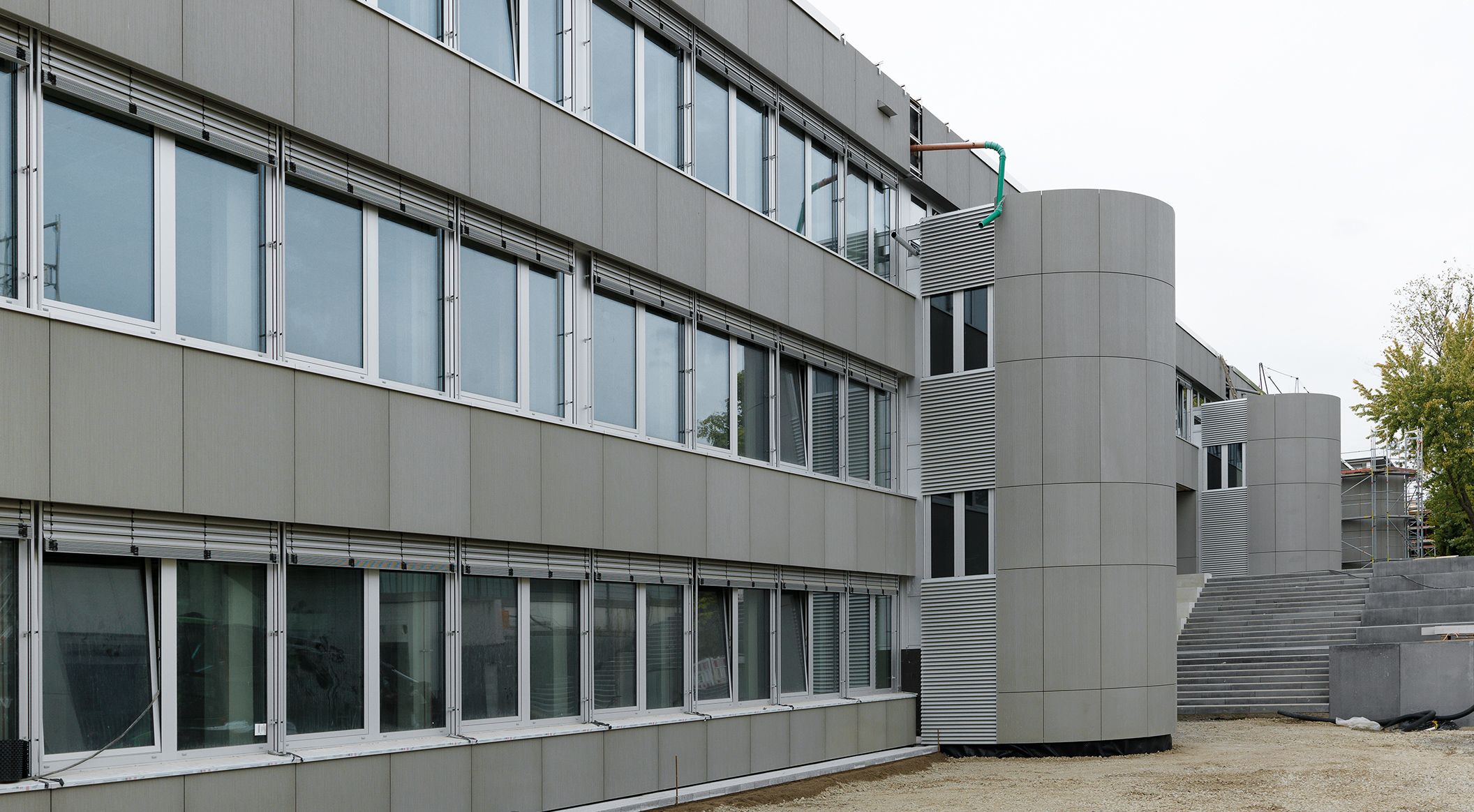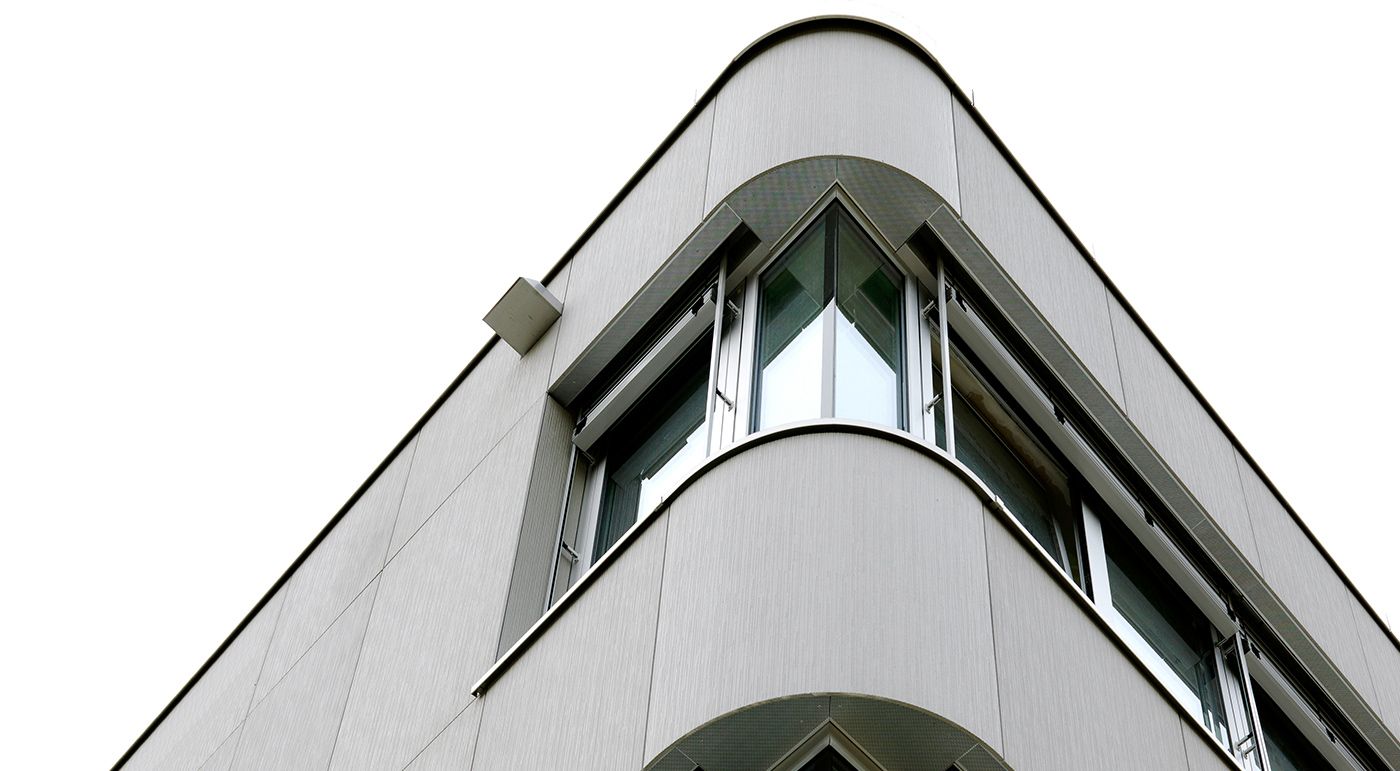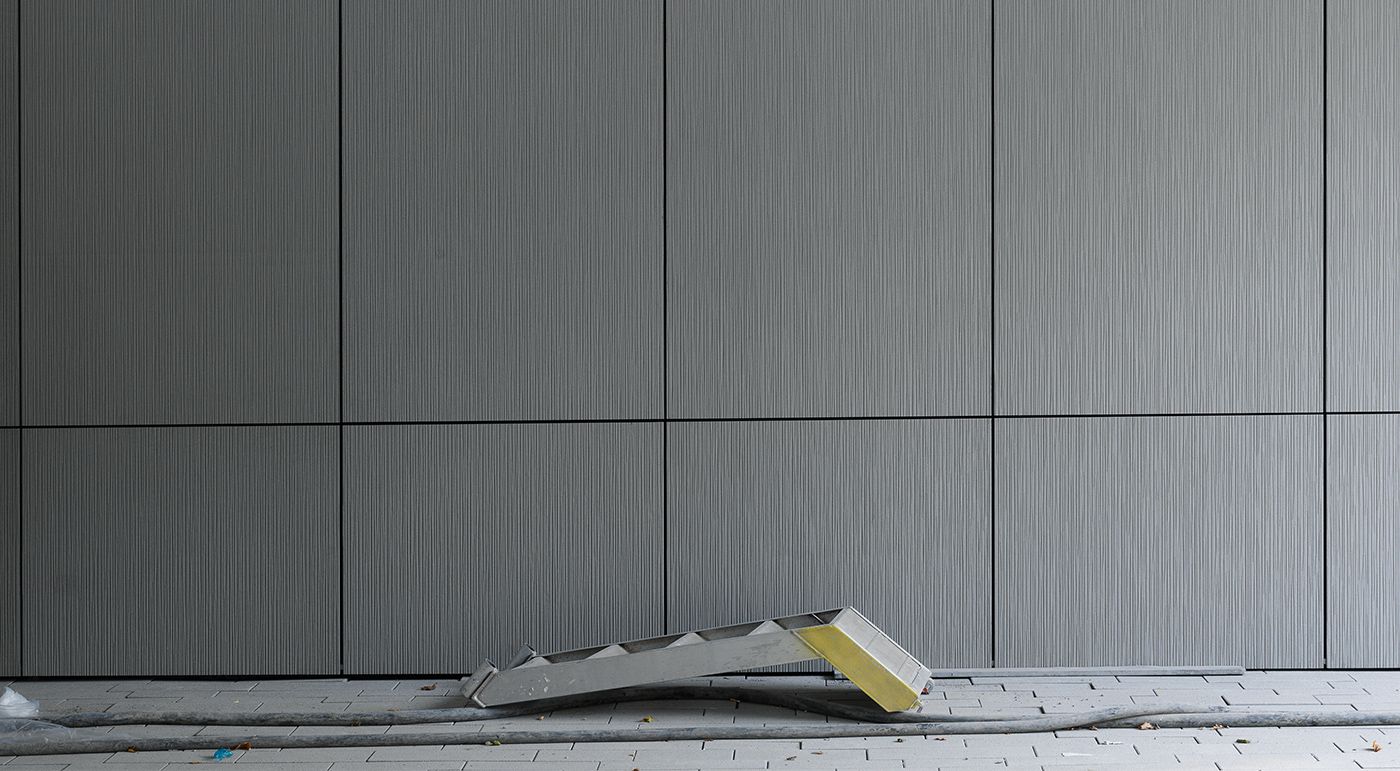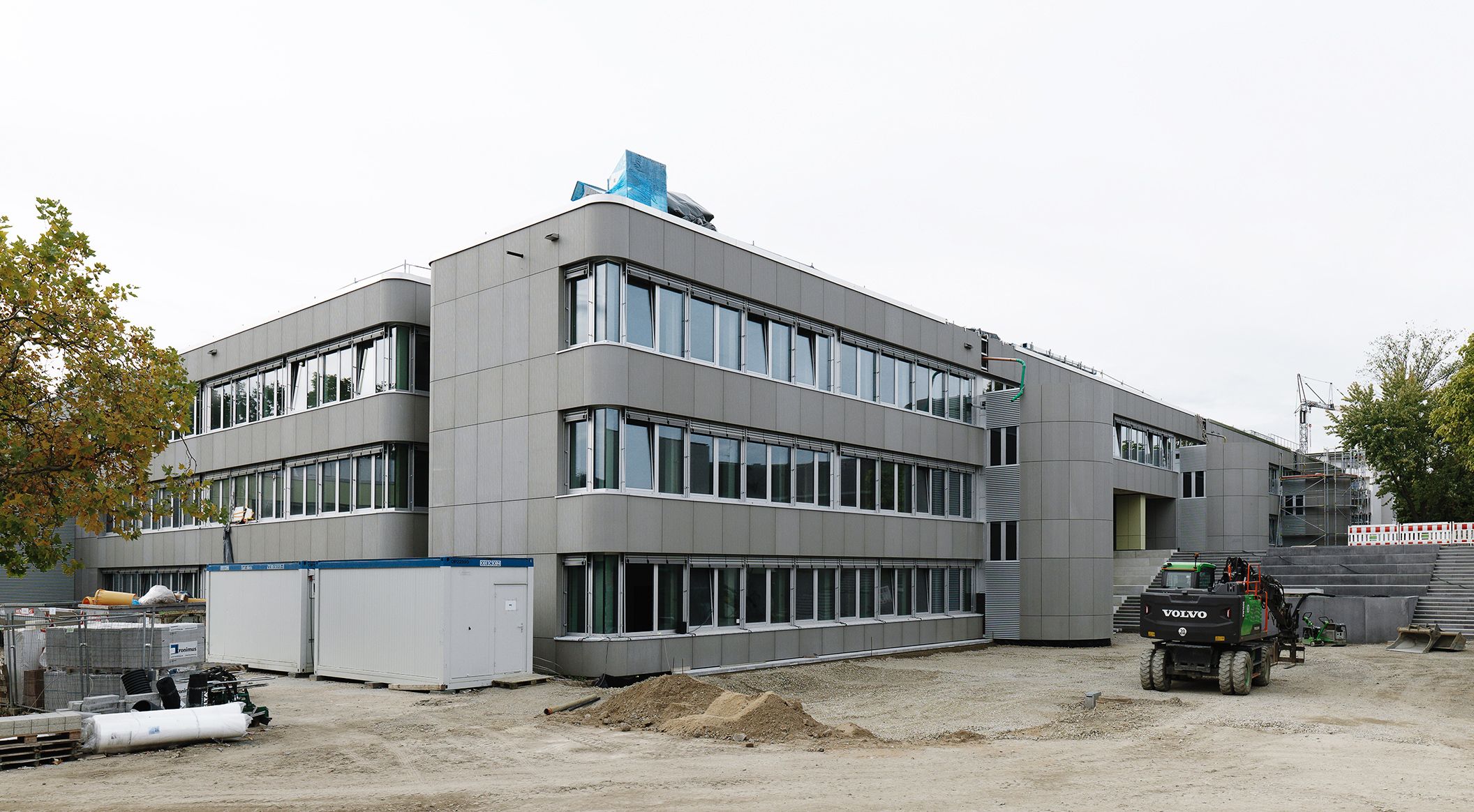Brutally new

The Friedrich-Rückert grammar school with a new facade made of glassfibre reinforced concrete – brutalist architecture in a subtle and modern new guise
As part of a major initiative to modernise schools and educational facilities in the city of Düsseldorf, the signs were also set for the future at the Friedrich-Rückert grammar school. In addition to renovating the exciting interior of the school, much work was done to make the exterior of the aging building look more inspiring and inviting. The new 3,000 m2 facade made of glassfibre reinforced concrete panels from Rieder bridges the architectural gap to the here and now. What could be better suited to a modern school building than innovative concrete with the goal of making the world a little better every day? The new texture twine was also used for the first time in this project for the colour matched formed parts, skilfully highlighting the building envelope.
The state capital of Düsseldorf is investing a total of 55 million euros in the Friedrich-Rückert grammar school. As part of the overall renovation work, which was carried out by the architects at agn Niederberghaus & Partner, all the technical equipment was also updated.

A better look with a new concrete skin facade
The school building was built in 1973 in the style of brutalist architecture. The original shape and architecture of the building were to be preserved in keeping with the spirit of building within the existing fabric. The renovation of the school was to help to bring its open philosophy to the outside world. These goals were achieved through the revitalisation of the building envelope and the creation of a new entrance. The architects chose glassfibre reinforced concrete panels from Rieder, which met a variety of needs; the authentic character of the concrete elements closely adheres to the original architectural style and its purpose, namely to make spiritual liberation tangible and visible. At the same time, the twine texture on the silvergrey concrete skin panels loosens up the appearance of the facade. Linear bands in different sizes playfully stretch across the panels. Their superimposition creates an exciting look on the building envelope. The flow of the lines harmoniously integrates into the overall picture. The interplay of light and shadow creates individual highlights.
“The variety of textures is exciting – it gives the old building from the 1970s a modern facade that retains its original charm,” says agn project manager Cornelia Becker, referring to the surface effects on the glassfibre reinforced concrete panels. For the first time for this project, formed parts from Rieder were produced in this texture. The curved C-shaped elements are used on the cladding of the staircases. The formed parts, which lend outer skin a unique character, were developed in collaboration with the architects and clients specifically for the project.

New formed parts versions for more design options
formparts 22 from Rieder are part of the wide range of solutions that the concrete expert from Austria can offer planners and builders when it comes to concrete facades. The formed parts with a sharp or rounded edge are relatively light and easy to handle during installation. The low weight of the formed parts and their large span widths also means that less supporting structure is required. This makes them an economical alternative for the building envelope. Different colours, surfaces and textures and a variety of different shapes (from C to L to U as well as special solutions) and lengths help architects find the best possible solution for their facade. Rieder’s new plug & play mounting system, which will be launched in the summer of 2022, provides coordinated components. The mounting options are compatible with all standard supporting structure and are easy to adjust on site.
The shaped elements can be optimally combined with and matched to the flat concrete skin facade panels, as was done in the Friedrich-Rückert grammar school project. This easily creates architecturally sophisticated facades with ecological and economic benefits. In addition to durability, low maintenance and complete fire resistance, Rieder products also impress when it comes to eco-friendly: Non-toxic products (free of crystalline silicon dioxide) and minimal use of primary energy in production, to name just a few.
